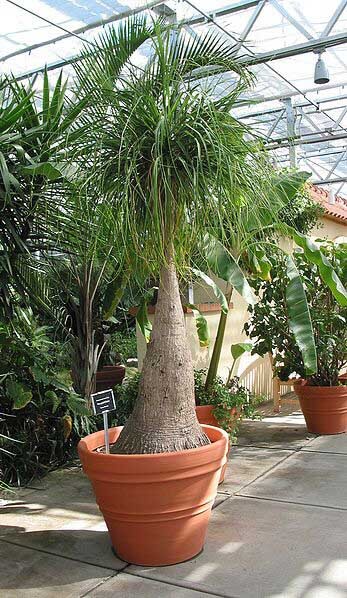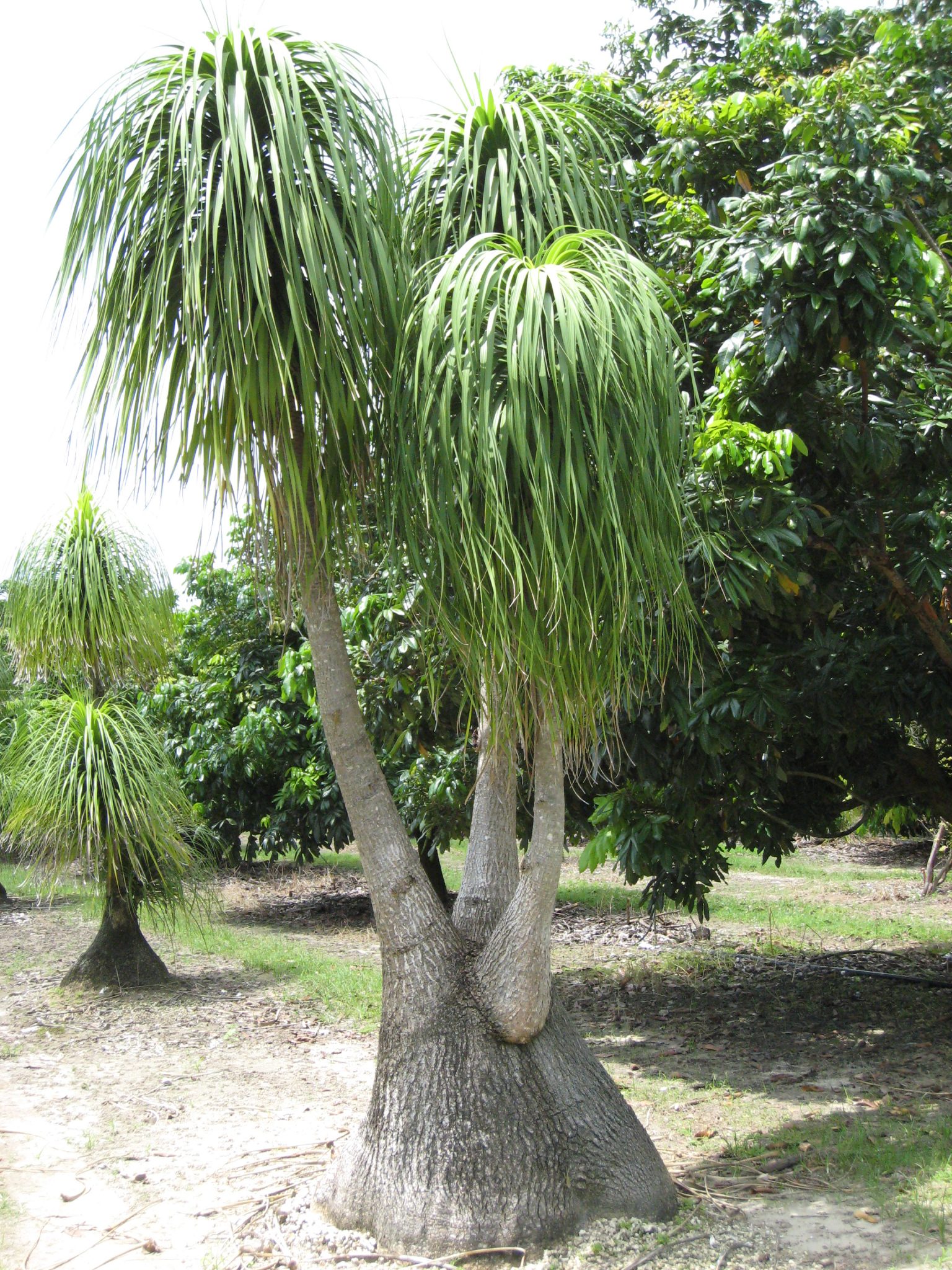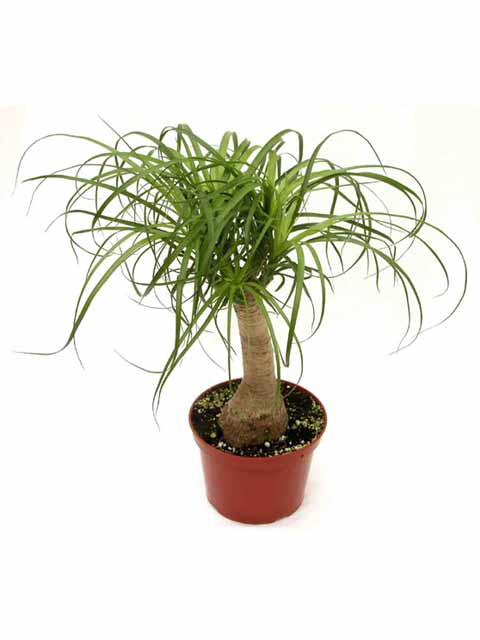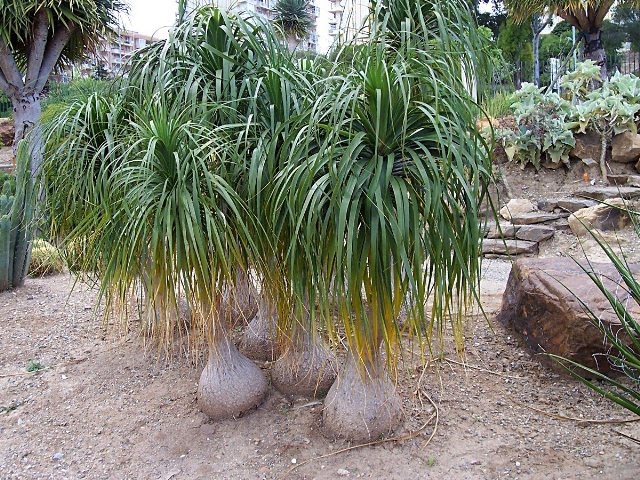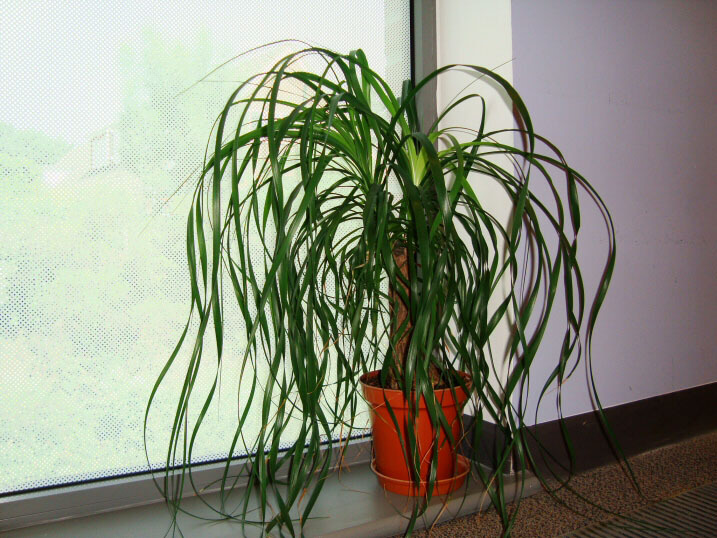Beaucarnea
Beaucarnea gracilis in Mexico
Beaucarnea is a plant genus which belongs to the family of asparagus plants ( Asparagaceae ). The botanical name honors Jean -Baptiste Beaucarne, a Belgian Sukkulentenliebhaber and notary in Ename, who collected the first flowers of Beaucarnea recurvata.
Description
The species of the genus Beaucarnea grow shrubby to tree -shaped. The elongated stems are swollen at the base, tapering towards the tip. Through the remains of leaf bases its surface appears irregularly pitted. The rosettes in standing together, enduring true leaves have a wide linealische, stiff, tapered, ridged, widened at their base leaf blades. The leaf edges are serrated, smooth or slightly rough.
The Rispige inflorescence contains many stalked flowers. The relatively small, fragrant blooms are triple and unisexual, rarely a few are hermaphroditic. The two by three bracts are white, yellow or cream-colored. Male flowers are short-lived. The ovary contains two to three ovules. There shall be three-winged capsule fruits.
Systematics and distribution
The genus Beaucarnea is common in Central America, Mexico, Guatemala, Belize, Honduras, and possibly Nicaragua. The first description of the genus in 1861 by Charles Lemaire. William Trelease divided the genus in 1911 in the two sections Beaucarnea and Papillatae. The genus Beaucarnea is closely related to the genera Nolina and Calibanus:
Beaucarnea
Calibanus
Nolina
The genus Beaucarnea is poorly known. It includes the following types:
- Section Beaucarnea Beaucarnea goldmanii Rose
- Beaucarnea guatemalensis Rose
- Beaucarnea pliabilis (Baker ) Rose
- Beaucarnea recurvata Lem.
- Section Papillatae ( Trel. ) Thiede Beaucarnea compacta L.Hern. & Zamudio
- Beaucarnea gracilis Lem.
- Beaucarnea hiriartiae L.Hern.
- Beaucarnea sanctomariana L.Hern.
- Beaucarnea stricta Lem.



